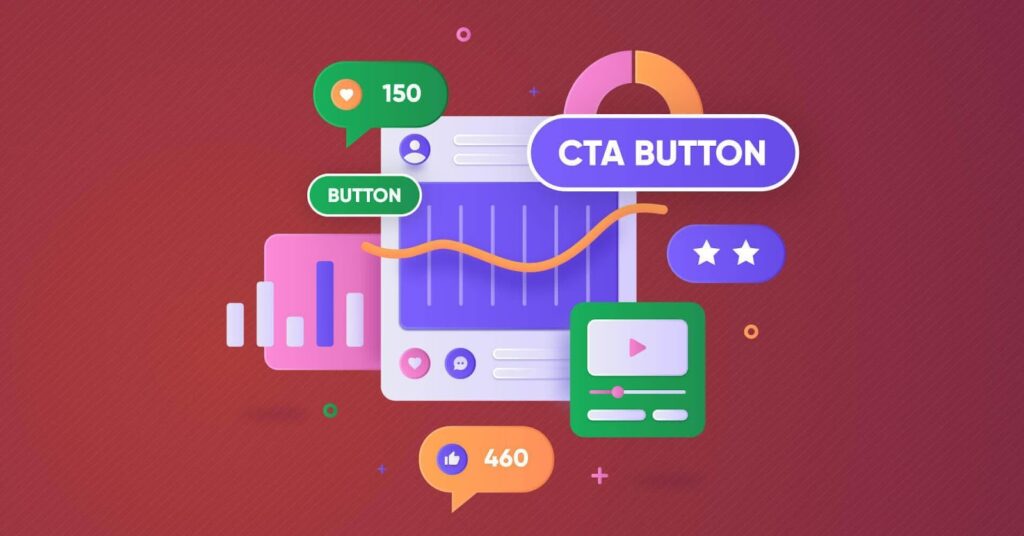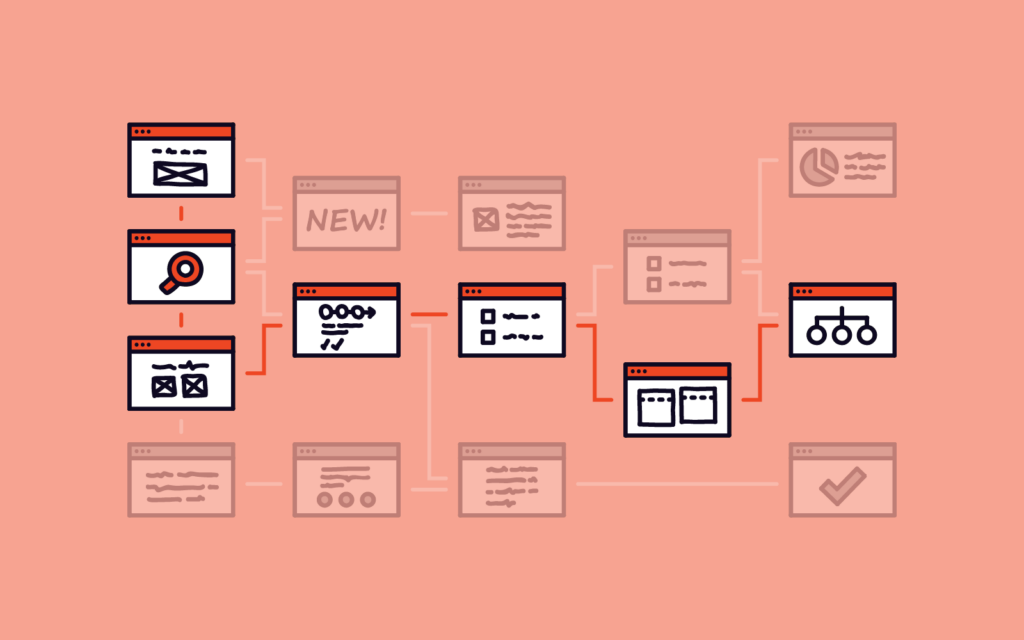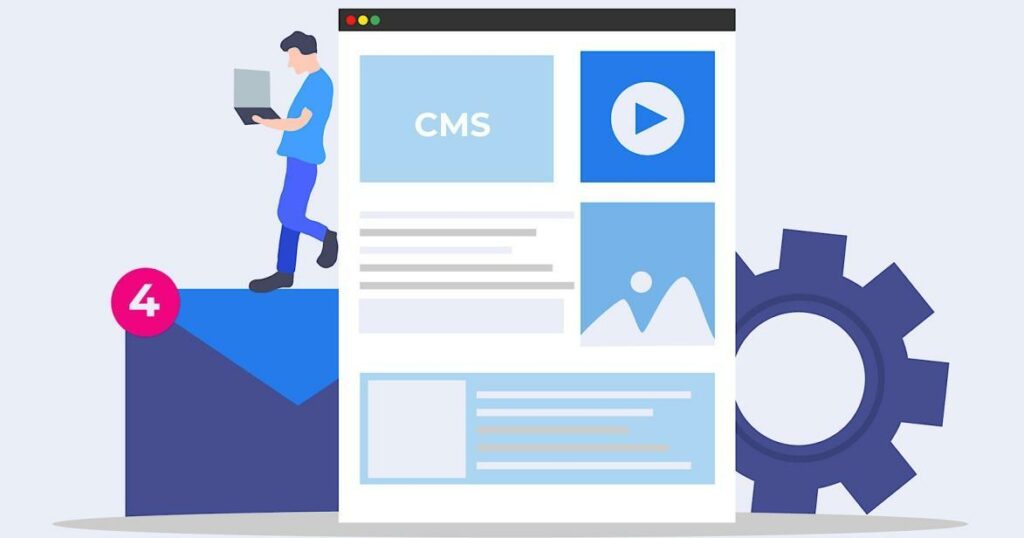What makes a good website: 6 characteristics to prioritize are essential questions for any business owner, marketer, blogger, entrepreneur, or founder looking to create a successful online presence. A website that is crafted thoughtfully and performs well can draw in more visitors and inspire them to spend longer periods engaging with the content.
In this blog post, we will explore the six key characteristics that should be prioritized when designing or revamping your website. From clear purpose and effective CTAs to excellent user experience and design elements, these factors make your site stand out from the competition.
Furthermore, we’ll delve into fast loading times as an equally important aspect of creating a seamless user browsing experience on various devices. Additionally, creative visuals that align with your brand identity can significantly enhance the overall appeal of your site’s content.
Last, we will discuss how regular maintenance and updates contribute to maintaining optimal performance levels while establishing trustworthiness and authenticity through transparent information about your company’s history and team members.
Focusing on these six aspects of what makes a good website: 6 characteristics to prioritize – you’ll be well-equipped with the knowledge needed to elevate your online presence in today’s competitive digital landscape.

Clear Purpose and Effective CTAs
A clear purpose and effective call-to-actions (CTAs) are crucial for a good website. Your homepage should contain a mission statement or hero message that summarizes what your business does, guiding visitors toward the desired action with carefully crafted CTAs. By implementing these elements strategically, you can increase user engagement and conversion rates.
Mission Statement or Hero Message on the Homepage
Your homepage is often the first point of contact between potential customers and your brand. Therefore, making an excellent first impression is essential by including a concise yet powerful mission statement or hero message at the top of your page. In addition to conveying your unique value proposition, strategically placed call-to-actions (CTAs) should be used throughout key areas of the page to guide users toward taking specific actions on your site.

Strategically Placed Call-to-Actions
In addition to having a clear purpose through your mission statement or hero message, it’s vital to guide users towards taking specific actions on your site by incorporating well-designed CTAs throughout key areas like headers, footers, sidebars, blog posts/articles/news stories frequently adding value both existing/new readers alike increasing chances shares social media channels consequently driving traffic back main site itself.
Use Clear & Concise Language
To ensure your CTAs are effective, use clear and concise language communicating the value of taking action. Additionally, make sure your CTA buttons stand out visually from other elements on the page to increase click-through rates.
Excellent User Experience and Design
Prioritizing user experience is essential for a good website. An easy-to-navigate site with clean designs/layouts engages users and displays nicely on smaller screens, such as mobile devices – giving you an advantage in search rankings. In this section, we will discuss the importance of easy navigation through menus and links, along with creating a clean design optimized for desktops, tablets, and smartphones.
Easy Navigation Through Menus and Links
A well-constructed menu system ensures visitors can rapidly discover what they are searching for without being bewildered or disappointed. After all, there’s no point having a fancy new car if it won’t start up properly – similarly, there’s no point having an awesome website if nobody can use it! To achieve this:

Clean Design Optimized for Desktops, Tablets, and Smartphones
In today’s digital landscape, responsive website design is crucial since more than half of all web traffic comes from mobile devices (source). A responsive design adapts seamlessly to different screen sizes ensuring optimal viewing experiences across various platforms/devices. Here are some tips for creating a clean design optimized for multiple devices:
Responsive Design
Having a responsive design is key to ensuring your site looks good no matter what device it’s being viewed from. Responsive design means the page layout adjusts automatically depending on screen size and orientation. So whether someone views your website from a desktop computer or an iPhone 6 Plus, they’ll get the same great experience every time. This also helps you avoid creating separate versions of your site for different devices – which would be time-consuming and costly in the long run!
Ensure Your Site Passes Google’s Mobile-Friendly Test
Google now uses “mobile-friendliness” as one of its ranking factors when determining where pages appear in search results. So if you want people to find you online, ensuring your site passes Google’s Mobile-Friendly Test is essential!
Usability
Finally, don’t forget about usability when designing for mobile users:

Fast Loading Times
Visitors expect instant answers when browsing online; therefore, fast loading times should be prioritized. A website that loads quickly improves user experience and gives you an advantage in search rankings. To ensure your website runs quickly and efficiently, we will explore various methods of optimizing performance across different platforms and devices.
Image Compression Techniques
Large images can significantly slow down a website’s load time. To improve the speed of your site, it is essential to compress image files without compromising their quality. Several tools for image compression, such as TinyPNG or JPEGmini, can help reduce file sizes while maintaining visual clarity.
Regular Updates of Plugins / Themes
Maintaining up-to-date plugins and themes on your website ensures optimal performance and security. Outdated software may contain vulnerabilities that hackers can exploit or cause compatibility issues with other elements on your site – leading to slower load times or even crashes. Regularly updating these components helps keep everything running smoothly while minimizing potential risks. To stay informed about new updates/releases from plugin/theme developers, subscribe to newsletters via email/social media channels where possible.

Consider Caching Solutions
In addition to implementing these strategies mentioned above – consider using caching solutions like W3 Total Cache (for WordPress sites) alongside Content Delivery Networks (CDNs) such as Cloudflare, further enhancing overall site speed significantly.
Creative Visuals
Implementing creative visuals throughout your website is essential for capturing visitors’ attention and reducing bounce rates. By incorporating creative visuals into your website, you can increase the time visitors spend on it, positively impacting your SEO results. For a successful website, focus on high-quality visuals that reflect your brand identity – videos, animations, or images.
High-quality Images Consistent with Brand Identity
High-quality images boost the visual appeal of your website and foster a strong bond between users and your brand. Ensure all images used on the website are sharp, clear, and relevant to the content they accompany. Additionally, ensure that these visuals align with your overall branding strategy by maintaining consistency in colors, styles, and themes across different pages. You can find free stock photos from websites like Unsplash, Pexels, or Pixabay. However, investing in custom photography or illustrations tailored to your business will help set you apart from competitors.
Engaging Videos/Animations Integrated into Content
Videos and animations are powerful tools for keeping users engaged while delivering complex information more effectively than text alone. Consider incorporating explainer videos to demonstrate how products/services work or animated infographics highlighting key statistics/data points related to industry trends.

Maintain Consistency in Branding
Remember to maintain consistency in branding while using high-quality images and engaging multimedia content that resonates with your audience. Integrating captivating visuals into your website design can make it more aesthetically pleasing and enhance user engagement, reduce bounce rates, and improve SEO performance. Platforms like PowToon, Biteable, and Animaker offer user-friendly tools for creating custom videos/animations without requiring extensive technical expertise – perfect for those just starting.
Regular Maintenance/Updates
To keep your website performing optimally, ensuring that all content remains current and secure is essential. This includes publishing regular blog posts, articles, or news stories to provide value for existing and new readers. Doing so increases the chances of your content being shared on social media channels, consequently driving traffic back to your main site.
RSS Feed Integration & SSL Certificates
Integrating RSS feeds allows users to subscribe to your updates easily. Obtaining an SSL certificate ensures added security for data transmission between browsers and servers. Uncover the advantages of having an SSL certificate on your website here.
Regular Site Audits and Data Analysis
Conducting regular site audits helps identify areas needing improvement concerning SEO or visitor experience overall. Utilize tools like Google Analytics or SEMrush for comprehensive insights into user behavior patterns and search engine performance metrics – enabling better decision-making. Staying ahead of the game with regular maintenance and updates can guarantee a top-notch website, allowing for an enjoyable user experience that will keep people returning.

Establish Trustworthiness/Authenticity
In today’s digital world, consumers want to know who they are dealing with. Establishing trustworthiness and authenticity through personalization is crucial for a good website. You can ultimately attain better conversion rates by forging a bond between your brand and the audience.
Team Photos and Bios on the “About Us” Page
An effective way to build trust is by showcasing your team members on an About Us page. Include professional photographs of each member and brief biographies highlighting their skills, experiences, and roles within the company. This humanizes your brand while giving visitors insight into the people behind it.
Company History and Values are Showcased throughout the Website.
Besides introducing your team members, sharing your company’s history and core values helps create an emotional bond with potential customers. Dedicate sections or pages to explain how your business started, its milestones achieved so far, and what sets it apart from competitors.

By weaving these components into your site, you can craft a sense of trustworthiness and genuineness that will help visitors bond with your brand more easily and eventually become devoted customers.
Social Media is an Extension of a Company’s Website
For website users, social media account links provide a quick and easy way to connect with companies. Links to social media accounts are extremely useful for two-thirds of people (67%), making them one of the most popular features on websites.
Connecting Informally
Social media is more than just a platform for sharing company news and updates; it’s also an opportunity to engage informally with customers. Businesses should use their social media profiles as an extension of their website, offering helpful content that resonates with their target audience. This can be done through creative visuals, interactive polls, stories, or live videos that add value and create meaningful connections between the brand and its followers.
Valuable Social Proof
Integrating icons linking to your business’s various social profiles provides valuable “social proof”—it shows potential customers that you have a legitimate presence across multiple platforms which helps build trust in your brand before they even visit your website. It also allows users to quickly verify if any new products or services you offer are from your company rather than from another source by cross-referencing what they see on other sites like Facebook or Instagram against what they find on your main site.

Time Savings
For busy small businesses especially, having active accounts on multiple social networks can save time compared to other web features such as “About Us” pages or blogs, requiring more effort and maintenance to stay current. By leveraging existing platforms like Twitter and LinkedIn instead of creating additional content solely to market yourself online, you can free up resources to focus on running other aspects of the business while still connecting effectively with potential customers via these channels at a minimal cost.
Security
When it comes to websites, security is paramount. Without a secure website, you’re open to potential issues and problems. It’s like having the front door of your house wide open for anyone to come in – not something any sane person would do!
Data Protection
When you have a website, there will likely be people who will input data into it, such as their name or email address. You need to ensure that this data is protected from hackers by using encryption technology and other protection methods. This ensures that no one can access the information without permission from the owner.
SSL Certificates
An SSL certificate is important to keeping your website secure. It encrypts all communication between the server and the user so that no one can intercept or read what’s being sent back and forth. It also helps with SEO rankings, which makes them even more important!
Backups
Backing up your website periodically is essential to keep everything safe in case something goes wrong with your hosting provider, or someone hacks into your site. Having backups means restoring everything quickly without losing any data or content, which could be disastrous otherwise!
Firewalls
Firewalls are another great way of protecting against malicious attacks on your website by blocking certain types of traffic from entering the system and preventing unauthorized access attempts from happening in the first place. They’re relatively easy to set up but should still be done properly for maximum effectiveness!

Password Policies
Ensuring everyone has strong passwords when accessing sensitive areas on your site is essential for keeping things secure – hackers can easily guess weak passwords, so they must always be avoided at all costs! Implementing password policies, such as minimum length requirements, special characters, etc., will help ensure only those with valid credentials gain access where necessary.
Overall, security should never be taken lightly when running a website – it’s vital for protecting your and others’ personal information online while also helping maintain good SEO rankings!
Taking these steps now will save time (and potentially money) if anything ever goes wrong – better safe than sorry, after all!
Optimized for SEO
When it comes to digital marketing, SEO is an absolute must. Search engine optimization (SEO) helps ensure that your website is visible in search engine results and drives more organic traffic to your site. In other words, if you want people to find your website online, you must ensure it’s optimized for SEO.
Keyword Research
One of the most important aspects of SEO is keyword research. This involves researching popular keywords related to your business or industry and incorporating them into content on your website. Doing so will help increase visibility in search engines like Google and Bing, as they will be able to recognize the relevance of the content on your page when a user searches for those terms.
Backlinks
Another key element of SEO is creating quality backlinks from other websites that link back to yours. These links act as “votes” for credibility in the eyes of search engines; having a good number of high-quality links pointing back at your site can significantly improve its ranking in SERPs (search engine result pages). To do this effectively, reach out to influencers or bloggers who are relevant within your niche and ask them if they would be willing to link back from their sites – make sure that these sites have authority and that their content aligns with yours!

Optimizing Images
Optimizing images on web pages can also help boost rankings by making it easier for crawlers (software programs used by search engines) to identify what’s displayed on each page. Ensure all images include alt text describing what’s shown – this helps both users and bots understand what each image contains without needing any visual cues!
Meta Tags
Meta tags, including titles and descriptions, should always be addressed; these offer valuable information about each page that appears in SERPs. Writing them carefully and accurately reflects the page’s content can significantly improve click-through rates from potential visitors.
Frequently Asked Questions Concerning What Makes a Good Website: 6 Characteristics to Prioritize
Conclusion
Having a good website is essential to any business. To ensure your website is successful, prioritize the six characteristics mentioned in this article: clear purpose and effective CTAs; excellent user experience and design; fast loading times; creative visuals; regular maintenance/updates; establish trustworthiness/authenticity. Ensuring that your website is distinctive, attracts customers, and keeps them engaged requires implementing these steps.
Maximize your website’s potential by learning the six essential characteristics of a good website. You prioritize these to ensure your digital marketing, SEO, and technology blog stands out!